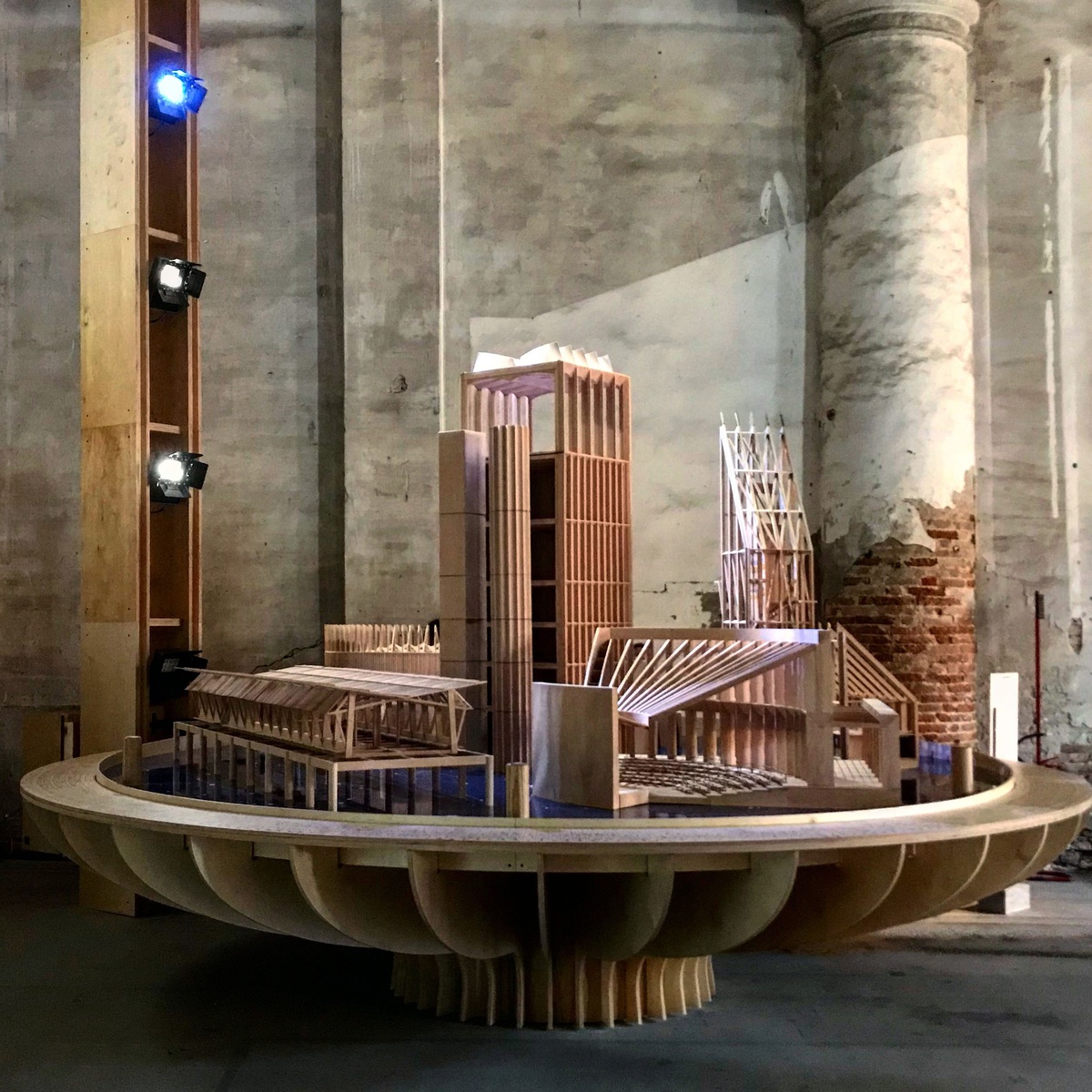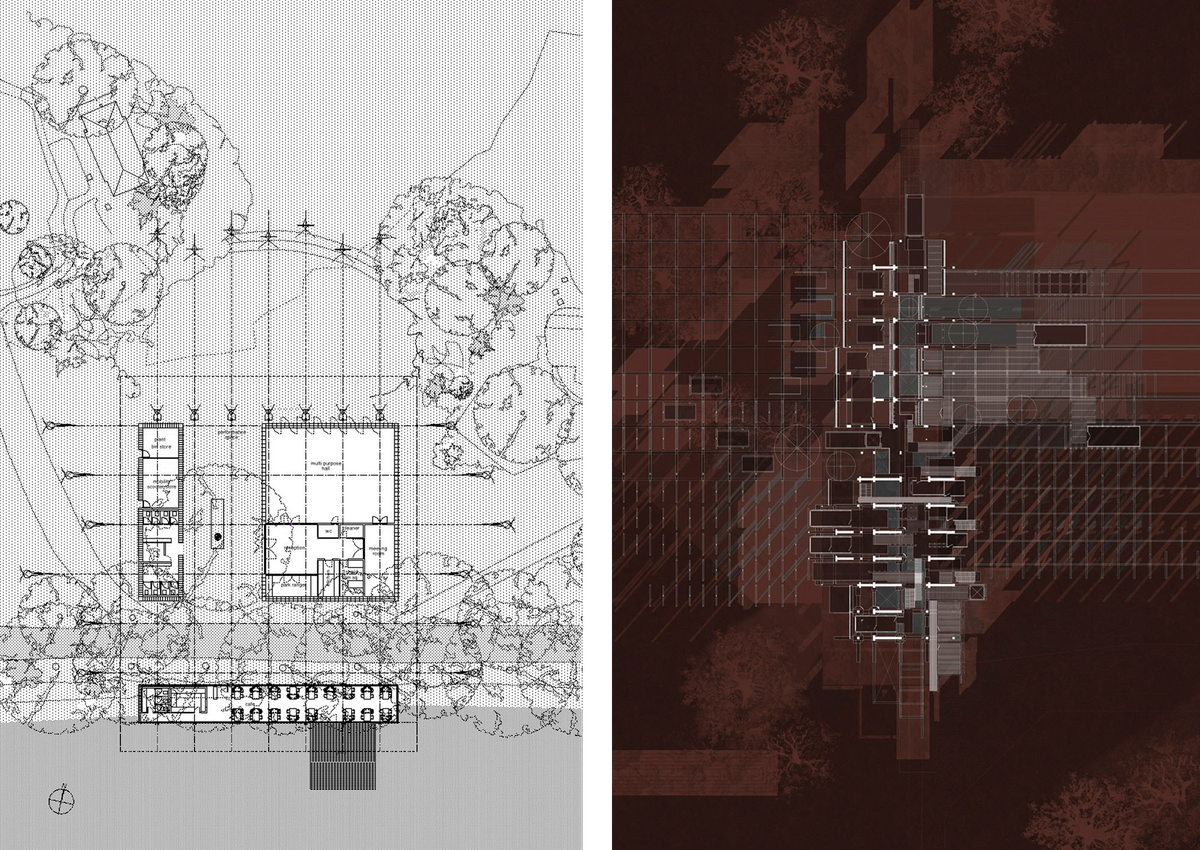BIENNALE ARCHITECTTURA 2018
JUNE 2018

The 2018 Venice Biennale opened to the public on the 26th May. This year’s theme “focuses on architecture’s ability to provide free and additional spatial gifts to those who use it and on its ability to address the unspoken wishes of strangers”.
Our contribution is a collection of six large-scale models, each representing a hall for gathering that the practice has designed. These models are placed upon a rotating table which is a calendar and a cosmic machine. Each hall has a different purpose yet they all bring people together in a rhythmic and cyclical fashion daily, weekly and annually. The specific uses of each building are regulated by a calendar of events, rituals and times of congregation. Their calendars are inscribed on the outer rim of a turning table. The table can be rotated by hand. When you turn it, varying light falls upon the models representing the passage of the sun through the day from dawn to dusk. It is a manual and mechanical process.
The intention of presenting these models in this way is to emphasise the relationship between the enduring frames of the buildings and the endless procession of fugitive elements that pass through them periodically.
SCREENS
JUNE 2015

Images: Avenham Park Pavillion, Preston. The Institute of Timber, Detroit
‘What do you see when you look up through the trees? Try to imagine this moment in a pretended place or part of a journey through a particular sequence of spaces. How does one describe this experience? What is it about spaces in nature, for example forests, which make them fascinating yet at the same time unsettling places to inhabit? A forest offers a place of refuge and natural beauty where the element of surprise is all part of the experience’
The idea of nature as a spatial experience and a driver for architectural form was a question that ran through my academic work and has subsequently led to an obsession with a perceptual and evolving architecture. It is interesting that my time in the office has allowed me to both reflect and discover parallels that run through similar themes in the work of the practice. A pursuit for a “thicket-like” characteristic, which allows for shifts in spatial qualities and a variation of patterns that overlay like woven surfaces to define space are just some of the mannerisms that I have begun to recognise.
I compare my own attempt to generate a kind of place that is animated, brightening as you ascend towards the canopy when reading the blurred lines of the roof of the pavilion designed for a woodland park in Preston. The structure is designed as a number of layers of mesh to capture rain whilst creating a display of shadows that activate the building beneath. As a competition proposal, the structure was never fully realised yet it has been the ideas established during this process that still resonate today. By staggering the building between the tree density, the line of the pavilion is undefined breaking the traditional form of constructing space and allowing a new reading of the building and landscape. Particularly enlightening in the search for the enclosure of space is a fruition of a screen-like quality that works as a surface and also as a generator of it’s tectonic form.
The use of the screen as a ‘device’ in our architecture allows elements to become not only separators of rooms or the external environment but also actuators for unique and unimagined spatial experiences. In search of this architecture is an attempt to purposefully discover a different architecture and an unplanned result that wouldn’t necessarily be reached through something un-natural.
Benni Allan graduated from the Bartlett with Distinction in 2014, and has been working on a project for Jesus College, Cambridge since joining Niall McLaughlin Architects. In February 2015, Benni was named as one of the nation’s up-and-coming designers and ‘One to Watch’ by the Design Council to represent the future of British design. His project the ‘City of Forests’ looked at beautifying Detroit through reforestation strategies to promote a denser, greener and more sustainable future in which timber becomes the main economic output. As Detroit continues to struggle with the effects of massive industrial changes, this more positive image of vacancy as an asset opens new discussions about the future post-industrial city.

